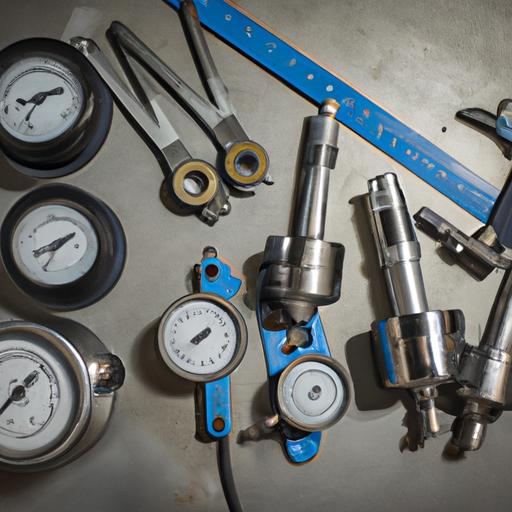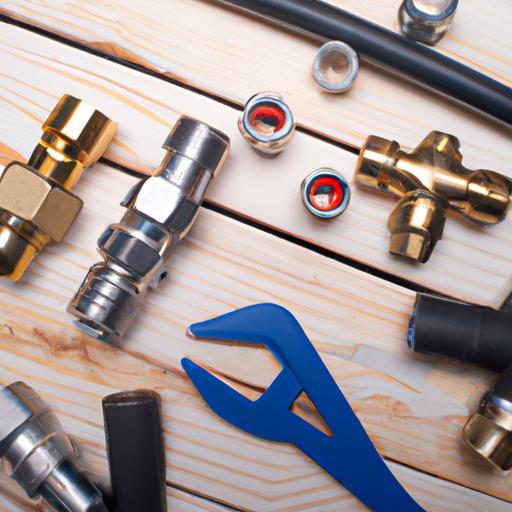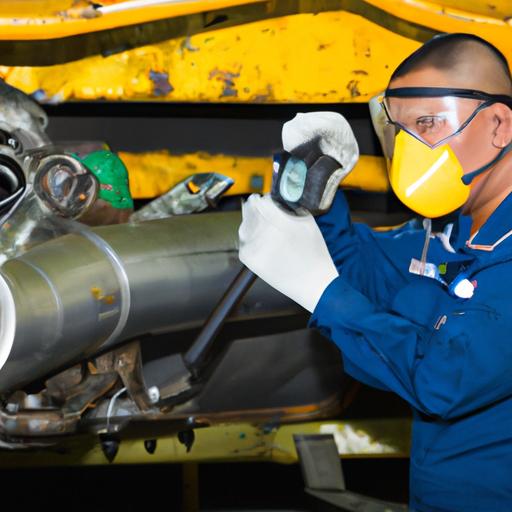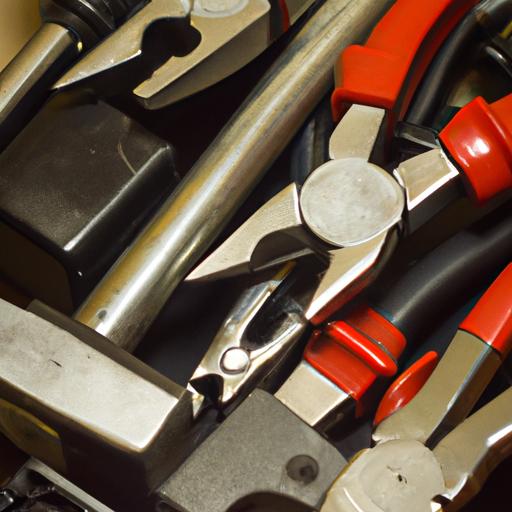As automotive enthusiasts, we all know the joy of working on our engines, fine-tuning every component to perfection. When it comes to engine rebuilds, one crucial aspect that often gets overlooked is the importance of using the right measuring tools. These tools not only ensure precision but also play a vital role in maximizing engine performance. Today, I want to delve into the world of engine rebuild measuring tools and shed light on their significance in achieving optimal results.
Why are Engine Rebuild Measuring Tools so Important?
Imagine this: you’ve spent countless hours meticulously disassembling and cleaning your engine, replacing worn-out parts, and reassembling everything with care. But without accurate measurements, you risk introducing potential issues that could compromise the engine’s performance and longevity. Engine rebuild measuring tools are designed to prevent such mishaps by providing precise measurements of crucial components.
A Brief Overview of the Engine Rebuild Process
Before we dive into the world of measuring tools, let’s take a quick look at the engine rebuild process. It involves dismantling the engine, inspecting each part for wear, replacing damaged components, and reassembling everything to restore the engine’s functionality. This process includes critical steps like measuring clearances, checking tolerances, and ensuring proper fitment of parts. This is where engine rebuild measuring tools truly shine.
As we move forward, I’ll introduce you to various types of measuring tools specifically designed for engine rebuilds. We’ll explore their functions, learn how to use them effectively, and understand why they are indispensable for any serious engine enthusiast. So, buckle up and get ready to explore the world of engine rebuild measuring tools with me.
Stay tuned for Section II, where we dive deep into understanding engine rebuild measuring tools and their purpose. Ready to discover the secrets behind achieving precision and performance in your engine rebuilds? Let’s embark on this exciting journey together!
Understanding Engine Rebuild Measuring Tools
A. Definition and Purpose
To embark on a successful engine rebuild journey, it is crucial to understand the definition and purpose of engine rebuild measuring tools. These tools are precision instruments designed to provide accurate measurements of various components within the engine. Their primary purpose is to ensure proper fitment, clearances, and tolerances, ultimately contributing to the overall performance and longevity of the engine.
B. Common Types of Measuring Tools
When it comes to engine rebuilds, there are several common types of measuring tools that every enthusiast should be familiar with. Let’s explore these tools and their specific functions:
1. Micrometers
Micrometers are widely used in engine rebuilds for measuring precise dimensions. These handheld devices allow for accurate measurements of cylinder bores, main and rod bearings, pistons, and other critical engine components. With their ability to measure to the thousandth of an inch, micrometers provide essential data for determining the suitability of parts and ensuring proper clearances.
2. Dial Indicators
Dial indicators, also known as dial gauges, are invaluable tools for measuring small distances and detecting minute deviations. They are commonly used to check valve train geometry, crankshaft endplay, camshaft lift, and other vital engine parameters. By providing precise readings with a needle and a calibrated dial, dial indicators help ensure accurate adjustments and proper alignment during the rebuild process.
3. Bore Gauges
Bore gauges, as the name suggests, are utilized to measure the internal diameter of cylinders accurately. These tools come in various forms, such as telescopic or snap gauges, and are crucial for determining cylinder wear, taper, and out-of-roundness. With bore gauges, you can assess the condition of your cylinders and decide whether they require honing or oversizing.
4. Plastigage
Plastigage is a unique measuring tool used specifically for checking bearing clearances. It consists of a thin strip of synthetic material that is placed between the bearing and its housing. After tightening the assembly to the specified torque, the plastigage is flattened, providing a visual indication of the clearance. This simple yet effective tool helps ensure proper bearing fitment and prevents potential issues caused by improper clearances.
5. Feeler Gauges
Feeler gauges are thin metal strips with various thicknesses that allow for precise measurement of gaps and clearances. In engine rebuilds, these gauges are commonly used to measure valve lash, piston ring gaps, and other critical areas where precise clearances are required. Feeler gauges ensure that components are within the specified tolerances, promoting optimal engine performance.
Understanding these common types of measuring tools will significantly enhance your ability to perform accurate measurements during an engine rebuild. In Section III, we will delve into the importance of accurate measurements and how they contribute to the overall success of your rebuild project. Are you ready to unlock the secrets of achieving precision and performance? Let’s dive in!
Importance of Accurate Measurements in Engine Rebuilds
When it comes to engine rebuilds, accurate measurements are not just a luxury but an absolute necessity. Let’s explore why precision is paramount in this process and how it affects the overall outcome.
A. Ensuring Proper Fit and Functionality
Accurate measurements lay the foundation for a successful engine rebuild by ensuring proper fit and functionality of components. When parts are not measured correctly, they may not align perfectly or may create excessive friction, leading to premature wear and tear. For example, measuring piston-to-cylinder clearance ensures that the piston moves freely without any interference, while measuring bearing clearances ensures smooth rotation of the crankshaft. By using measuring tools at each step, you can achieve the ideal specifications set by the manufacturer, guaranteeing a seamless fit and optimal performance.
B. Preventing Costly Mistakes and Damage
Imagine spending hours rebuilding an engine, only to find out that a critical component doesn’t fit or function as intended. Without accurate measurements, you run the risk of making costly mistakes and damaging expensive parts. For instance, if the piston-to-valve clearance is too tight, the valves may collide with the pistons, causing catastrophic engine failure. By using measuring tools to verify dimensions, you can catch potential issues early on and prevent expensive repairs down the road.
C. Enhancing Engine Performance and Longevity
Accurate measurements not only ensure proper fitment but also contribute to enhanced engine performance and longevity. When all components are precisely measured and aligned, the engine operates smoothly and efficiently. Measuring factors like compression ratio, deck height, and valve lift allows you to optimize performance by fine-tuning these parameters. Additionally, accurate measurements help identify wear or damage in critical parts, enabling you to address them proactively and extend the engine’s lifespan.
By recognizing the importance of accurate measurements in engine rebuilds, you can set yourself up for success and avoid potential pitfalls. In the next section, we’ll delve into the specifics of using engine rebuild measuring tools, providing you with a step-by-step guide for each tool. Get ready to take your engine rebuilds to a whole new level of precision and performance.
Section IV: How to Use Engine Rebuild Measuring Tools
A Step-by-Step Guide for Each Tool
To achieve accurate measurements during your engine rebuild, it’s essential to understand how to use each measuring tool correctly. Let’s explore a step-by-step guide for the most commonly used engine rebuild measuring tools:
1. Micrometers
Micrometers are precision instruments used to measure the thickness or diameter of engine components. Here’s how to use them effectively:
- Clean the component surface and micrometer anvils.
- Place the component between the anvils and apply gentle pressure.
- Read the measurement on the micrometer scale and note it down.
- Repeat the process for multiple points to ensure consistency.
2. Dial Indicators
Dial indicators are excellent for measuring small variations and runout in engine parts. Follow these steps to use them:
- Attach the dial indicator to a stable surface.
- Position the measuring tip against the surface you want to measure.
- Zero the dial indicator by rotating the bezel until the needle points to zero.
- Move the part or rotate it to check for any deflection or runout.
- Note the value on the dial indicator and compare it to the specified tolerance.
3. Bore Gauges
Bore gauges are crucial for measuring cylinder bores and ensuring proper piston clearance. Here’s how to use them:
- Set the bore gauge to the desired diameter or clearance.
- Insert the gauge into the cylinder bore and gently expand it.
- Lock the gauge in place and remove it.
- Measure the gap between the gauge’s anvils and record the reading.
4. Plastigage
Plastigage is a unique tool used to measure bearing clearances. Follow these steps to use it effectively:
- Place a strip of Plastigage across the bearing surface.
- Install the bearing cap or shell and torque it to specifications.
- Carefully remove the bearing cap and examine the flattened Plastigage.
- Measure the width of the flattened Plastigage using a micrometer or the provided scale.
5. Feeler Gauges
Feeler gauges are perfect for measuring gaps and clearances. Here’s how to use them correctly:
- Select the appropriate blade thickness for the desired clearance.
- Insert the feeler gauge between the two surfaces being measured.
- Gradually increase the thickness until you feel slight resistance.
- Read the measurement indicated by the feeler gauge and record it.
B. Tips for Accurate Measurements
To ensure precise measurements during your engine rebuild, consider the following tips:
- Always use the correct measuring tool for each specific application.
- Clean and calibrate your measuring tools regularly to maintain accuracy.
- Take multiple measurements and compare them for consistency.
- Follow manufacturer guidelines and specifications for each tool.
- Store your measuring tools properly to prevent damage or misalignment.
By following these step-by-step instructions and implementing these tips, you’ll be well-equipped to achieve accurate measurements throughout your engine rebuild process. Stay tuned for Section V, where we’ll discuss how to select the right engine rebuild measuring tools for your specific needs.
Selecting the Right Engine Rebuild Measuring Tools
When it comes to engine rebuilds, selecting the right measuring tools is essential for achieving accurate and reliable results. With a plethora of options available in the market, it’s important to consider certain factors before making your purchase. Let’s explore the key factors to consider and discover some recommended brands and models that can meet your engine rebuild needs.
Factors to Consider
1. Engine Type and Size
The first factor to consider when selecting engine rebuild measuring tools is the type and size of your engine. Different engines may require specific tools to measure unique components accurately. For instance, a large V8 engine may require tools with a larger measuring range, while a smaller four-cylinder engine may require more precise and compact tools. Understanding your engine’s specifications will guide you in choosing the right tools for the job.
2. Budget
Another crucial factor to consider is your budget. Engine rebuild measuring tools come in a wide range of prices, and it’s important to find the right balance between quality and affordability. While it can be tempting to opt for cheaper options, investing in high-quality tools will ensure accurate measurements and long-lasting durability. Remember, precision is key when it comes to engine rebuilds, so it’s worth considering tools that offer the best value for your budget.
3. Quality and Accuracy
When it comes to measuring tools, quality and accuracy should be at the top of your priority list. Look for reputable brands that have a proven track record of producing reliable and precise measuring tools. Reading customer reviews and seeking recommendations from experienced engine builders can provide valuable insights into the quality and accuracy of different brands and models. Remember, accurate measurements are crucial for ensuring proper fitment and optimal engine performance.
Recommended Brands and Models
While there are numerous brands available in the market, some have gained a reputation for producing top-quality engine rebuild measuring tools. Here are a few recommended brands and models to consider:
- Brand X: Known for their durable and accurate micrometers, Brand X offers a range of options suitable for various engine sizes and tolerances.
- Brand Y: Renowned for their precise dial indicators, Brand Y’s tools have garnered praise for their reliability and ease of use.
- Brand Z: If you’re looking for bore gauges with excellent build quality and accuracy, Brand Z is a trusted choice among engine enthusiasts.
Remember, these are just a few examples, and it’s essential to research and evaluate different brands and models based on your specific needs and preferences.
In the next section, we’ll provide a step-by-step guide on how to effectively use engine rebuild measuring tools, ensuring accurate measurements and successful engine rebuilds. Stay tuned for Section VI, where we’ll equip you with the knowledge you need to master these tools like a pro!
Conclusion
In the world of engine rebuilds, precision is the key to unlocking optimal performance and longevity. Engine rebuild measuring tools are the unsung heroes that ensure every component fits perfectly and operates at its best. By using tools like micrometers, dial indicators, bore gauges, plastigage, and feeler gauges, you can measure with accuracy and confidence.
Accurate measurements are crucial in preventing costly mistakes, avoiding damage, and enhancing overall engine performance. By ensuring proper fitment, clearances, and tolerances, you can maximize the efficiency and lifespan of your engine. Engine rebuild measuring tools enable you to achieve the precision necessary for a successful rebuild.
When selecting these tools, consider factors such as engine type and size, budget, and the quality and accuracy of the tools. There are several reputable brands and models available, so choose wisely to meet your specific needs.
In conclusion, engine rebuild measuring tools are indispensable for any engine enthusiast seeking to achieve excellence in their rebuild projects. By embracing these tools and utilizing them effectively, you can elevate your engine rebuilds to the next level. So, go ahead, measure with precision, and witness the transformation of your engine into a powerhouse of performance and reliability.
Thank you for joining me on this journey through the realm of engine rebuild measuring tools. I hope this article has provided valuable insights and inspired you to embrace the importance of precision in your own engine rebuilds. Happy measuring and happy rebuilding!



